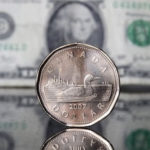Australian dollar traded higher against its US rival on Friday and was poised for the most considerable weekly advance in two months on bets that its recent drop might have been excessive.
AUD/USD climbed to a session high at 0.8993 at 5:05 GMT, also the pairs highest point since December 12th, after which consolidation followed at 0.8970, rising 0.66% for the day. Support was likely to be found at January 2nd low, 0.8843, while resistance was to be encountered at December 12th high, 0.9082. The pair was set to record a 1.1% weekly gain, or the most significant advance since the week through October 18th.
Earlier in the day the Aussie was losing ground against the greenback after it became clear that Chinese Non-Manufacturing PMI for December slowed down to a reading of 54.6 from 56 in November. The sub-index of new export orders fell to a reading of 49.4 in December from 49.9 a month ago. However, this data suggested still reasonable growth prospects for Chinas non-manufacturing sector.
On Wednesday HSBC Holdings Plc and Markit Economics said that the final value of their manufacturing PMI for China remained unchanged from the preliminary reading at 50.5 in December, following a reading of 50.8 in November. The index stood above the key level of 50.0 for the fifth consecutive month, as the sub-index of new orders has demonstrated a steady increase.
Additionally, the 14-day Relative Strength Index (RSI) for the AUD/USD pair dropped to 32 on December 27th, approaching the 30 level, which signals that a currency may rebound after recent declines.
Meanwhile, the Federal Reserve Bank said on December 18th that it plans to reduce its monthly bond purchases in January to $75 billion from $85 billion, while also reinforcing its position that the benchmark interest rate will remain low for an extended period of time. Bank’s policymakers will probably trim asset purchases in increments of $10 billion over the next seven meetings before ending the program in December 2014.
Fed Chairman Ben Bernanke is scheduled to take a statement later today at an economics conference in Philadelphia, alongside Philadelphia Fed President Charles Plosser.
Yesterday the Department of Labor in the United States reported that the number of people, who filed for unemployment assistance during the week ended December 28th, dropped to 339 000 from the upwardly revised 341 000 in the preceding week. Analysts had projected that the number of initial jobless claims will increase to 342 000.
Also, according to data by the Institute for Supply Management (ISM), US companies operating in the sector of manufacturing increased their activity at a weaker but still steady rate in December compared to November. The corresponding index, gauging the performance of manufacturing sector in the country, came in at a value of 57.0 in December, down from 57.3 in the previous month, which was also the highest level of the index in 2.5 years. Analysts had forecast that the manufacturing PMI will demonstrate a larger drop in December, to 56.9. Values above the key level of 50.0 are indicative of expansion in the sector.
Elsewhere, the Australian currency was advancing against the euro, with EUR/AUD cross down 0.76% on a daily basis to trade at 1.5232 at 7:56 GMT. AUD/NZD pair was losing 0.19% to trade at 1.0870 at 7:58 GMT.
The Aussie has marked the second-largest decline after the Japanese yen, dropping 13% during the past one year, among the 10 developed-nation currencies, which are tracked by Bloomberg Correlation-Weighted Indexes. The US dollar has risen 3.5%, while the euro has appreciated 8.8%, or the most considerable advance within the group.





